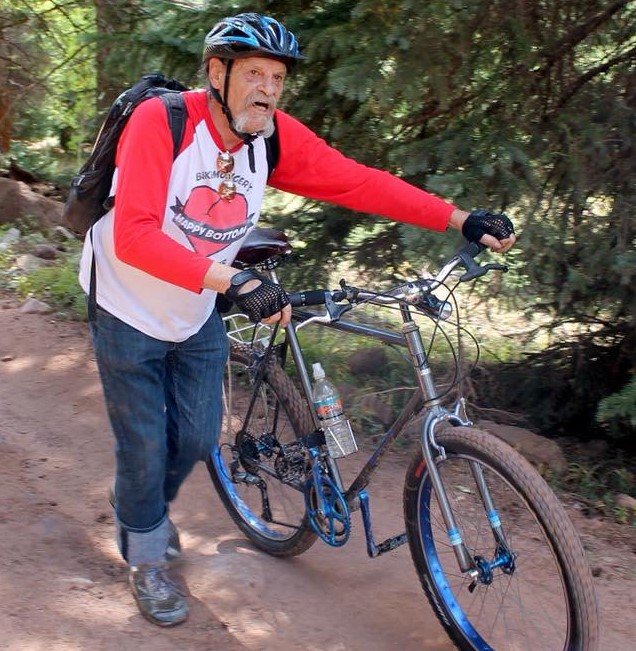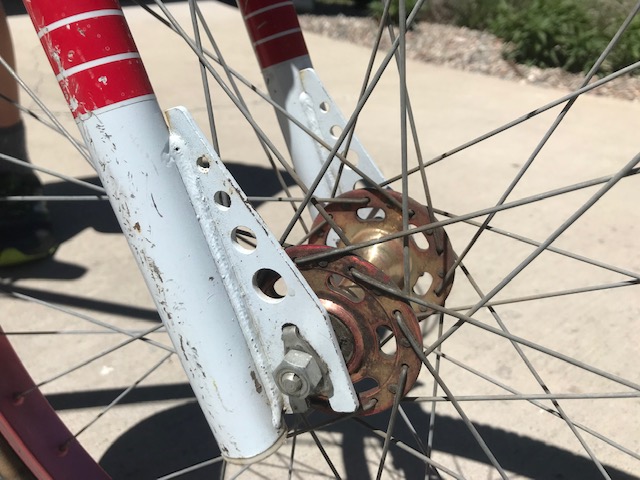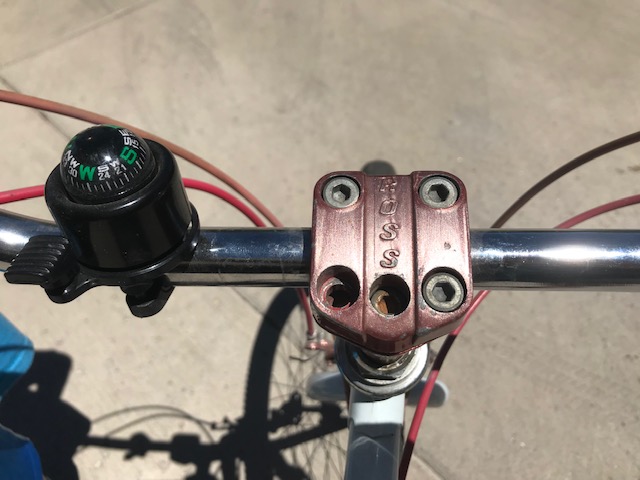By Uncle Crusty
Back in the early 1980s, when Reagan was king, a new sport was taking hold in the US- “mountain bicycling”. These mountain bicycles emerged from Marin County and gave cyclists the chance to roam the thousands of miles of dirt roads and single track trails that were in abundance all over the country.
It was 1983, and I was living in a small mountain town with a huge inventory of 2-track mining roads and untold miles of hiking trails that were open to mountain bikes, mainly because no one had ever tried riding one and the concept of trail closures hadn’t yet been born. Ski season was over, and my friends and I had little to do. Unbeknownst to us, soon knobby tires would enter our lives, and we would discover new horizons. We would also learn how to irritate other trail users. “Share the Trail” was a long way off.
As a resort brat growing up in an Idaho ski area, these new bikes seemed like a great way to escape the quiet small town as it dozed away the mountain summer. Unfortunately, my junior high income was not enough to buy a snazzy new Specialized Stumpjumper (available directly from Sharper Image), or even a Schwinn High Sierra, which were about the only options in town. My dad, who was sympathetic to my plight, said “I might know a guy….”
Lo and behold, one day dad comes home with something that resembled a mountain bike- a 1982 Ross Diamond Cruiser. It was like Christmas in July, except it was late May. I’m not sure how my dad got that thing into the car, and it’s a safe bet that the car needed some suspension work after, because the Ross was no lightweight steed by any means. Its tubeset was made of the finest single-butted hernium, and its alloy parts were cast from the same alloy the Navy used for anchors. The saddle alone weighed more than my school pack full of books. But dammit, it was mine! The Ross sported a white steel frame with red anodized rims, cranks and brakes. Not a bad color scheme.

Originally built as a beach cruiser, this Ross had been modified for mountain biking by the addition of straight moto bars, replacing the swept back cruiser bars that most likely came with it. Presto! Charlie Kelly, eat your heart out! [Editor’s Note: Charlie Kelly rode a clone of this Ross at the 2018 Crested Butte-Aspen Klunker Tour. He deemed the bike to be unsuitable for use for anything beyond a landfill].

The Ross was gigantic. With a 21″ seat tube (!), it’s huge for me now, and it was huger for my still growing body back then. Fortunately, by the time I started riding it, my voice had already changed, because the standover clearance was measured in microns. In the interest of self-preservation, the first order of the day was to install a Yakima rack pad along the top tube. Never has a “rack” pad been so apropos. Dismounting the Ross was something like dismounting a penny farthing- slide off the back, or have enough terrain on either side to lay the bike almost completely sideways, cuz my toes would not touch the ground otherwise. Safety bicycle be damned- this was a dangerous machine.

Propelling the Ross was an Eagle 2×5 drivetrain. No, not SRAM Eagle, just Eagle. This was friction shifting at its best. Much like finessing an old manual transmission (for those of you old enough to remember a clutch), the Eagle derailleurs required a gentle touch that came only with many miles of riding. The loud clackety-clack of a missed shift was common, and embarrassing- the sign of a newbie. The gear range was suitable for the beaches of Florida, not the mountains of Idaho, but that didn’t stop me from hiking the beast up any grade over 8 or 9%. At the time, a local bike shop had shirts printed that said, “If you ain’t hikin’, you ain’t mountain bikin’” Well, I was definitely mountain biking.


If climbing on that beast wasn’t enough of a challenge, descending was an exercise in point-and-pray. The Dia-Compe stamped caliper brakes may have been suitable on a beachside sidewalk, but in Idaho they offered little more than decoration. Stopping, as a general concept, never entered the picture. Even with Scott-Mathauser brake pads in line, there was too much mass to stop with so little leverage. The snake-belly tread tires didn’t provide much traction for the rare times when the brakes did contribute to the effort.

Idaho single track is far from technical, but the few rocks there are were to be avoided at all costs- suspension coming only in the form of bent elbows and knees. When the rocks were gone, the Ross could zip along nicely on rolling trails, the sheer mass of the frame providing a nice lesson in conservation of momentum- build speed on the descents to carry me up the next incline.

The ride quality of the Ross is stellar on pavement. Its relaxed geometry provides an upright pedaling position. It may even have been way ahead of its time. The slack head tube angle and short BMX stem length damn near mirror my new 2018 Orbea Occam AM. On the dirt, the Ross fostered a creativity in line selection.

Ill-suited as it was to the demands of real mountain biking, the Ross proved to be my gateway drug into the sport, for which I will always be grateful. That’s why I still ride it, having only replaced the handlebar with a more cruiser-appropriate bar. And a coconut beverage holder, which dried and split in the Colorado climate. And it only goes to the brewery or the barbecue joint, because the original tan sidewall, snake-belly tires are still on it, and I’m afraid they will explode soon. With luck, that will be on my way home from the bar, and I won’t even feel it.

I can’t say this was a spectacular mountain bike, but before I had my driver’s license it was indispensable. This machine took me to new places, provided multiple scars, and taught me to love cycling. I haven’t really tried to hold onto it for 36 years, but somehow it has managed to stay in the stable. Only after I had spent time on a variety of mountain bikes did I return to appreciate how good its ride really is, assuming you’re going slow enough to not worry about those brakes. Its longevity is remarkable, and for lazy days with a beer in hand, it really is a perfect machine.

One Reply to “(Extremely) Long-Term Review: 1982 Ross Diamond Cruiser”
Comments are closed.